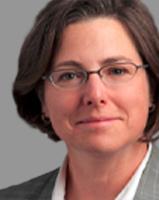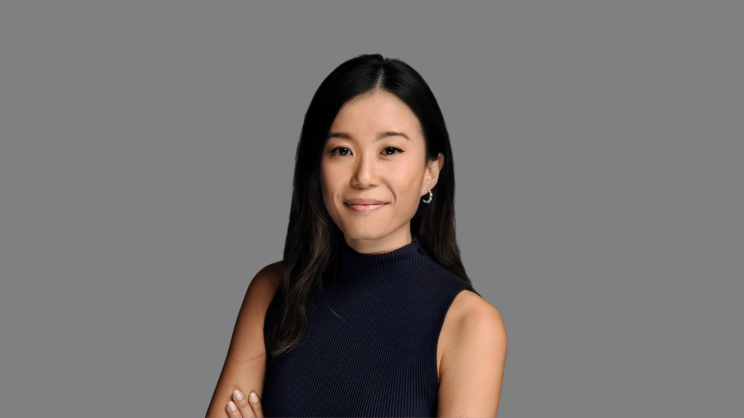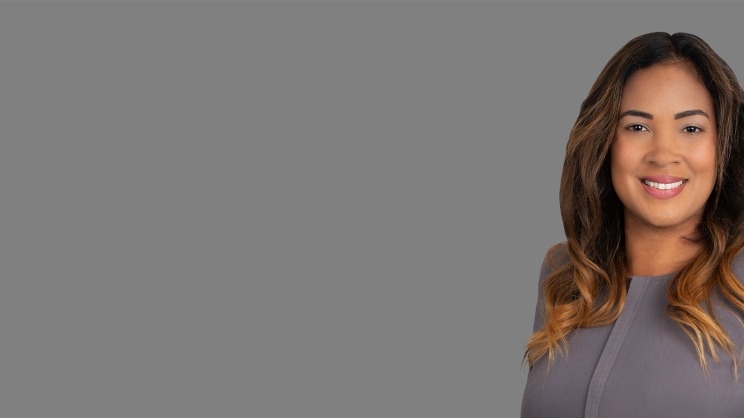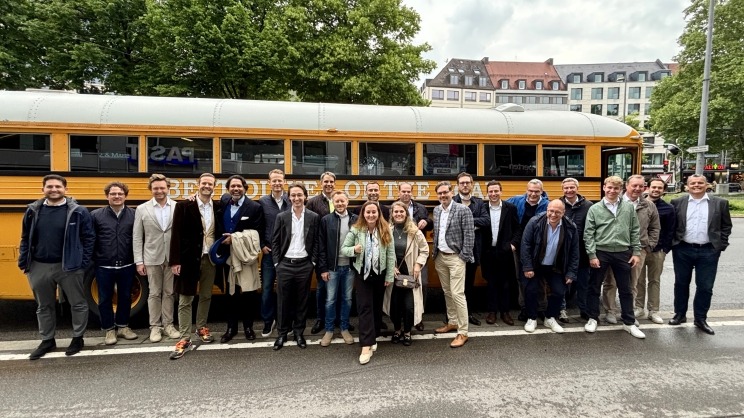Alumni Spotlight: Jennifer Wells

Jennifer Wells, a former Senior Director with A&M’s Corporate Performance Improvement practice from 2013-2015, is currently a Senior Program Officer on the postsecondary success team at the Bill & Melinda Gates Foundation. In this role, she guides and manages investments in student success-related continuous improvement. For the most part, these investments are comprised of grants to high-potential institutions dedicated to improving completion rates for low-income, first generation students of color and investments in innovations that support institutional continuous improvement.
Founded in 2000, the Bill & Melinda Gates Foundation is now said to be the largest private foundation in the U.S. with the primary goal of enhancing healthcare, reducing extreme poverty globally, and expanding education opportunities and access to information technology. Based out of Seattle, Washington, the foundation is controlled by three trustees: Bill Gates, Melinda Gates and Warren Buffett.
In the Q&A below, Ms. Wells shares tales of her career trajectory, her view of the “get it done” A&M culture, her passion for righting an unevenly distributed U.S. education system and where she sees the future of the postsecondary education.
You’ve had an amazing career trajectory. Where do you attribute your success?
As my career evolved, I realized that I was very motivated by serving clients and helping groups of people tackle problems they couldn’t tackle on their own. I also enjoy putting the customer at the center of the dilemma and helping clients shift what they are doing to be better for their customers. I’m motivated by tricky problems and by scenarios when I’m in over my head. I’d credit my interest in making things easier for people and asking questions to get to the root of the challenge as something that has consistently helped in each role I’ve had.
What’s your favorite aspect of your role as Senior Program Officer at the Bill & Melinda Gates Foundation?
My favorite aspect is that I’ve been able to apply what I have learned throughout my career and utilize it for something I feel so passionate about. I view education as an opportunity creator, especially in the U.S. I benefited tremendously from growing up in a public-school system that was unusually good. When I was younger, I did not understand how the education system was so unevenly effective and the depth by which quality varied so wildly. I had great teachers and a safe and stimulating school experience - unfortunately that’s not the norm. I’m humbled that I’m able to work on influencing how education might become more equitable for all students and in particular in higher education.
What are you seeing now in the education sector, based on your role with the Foundation?
My role on our team is similar to my colleagues in that it’s grounded in making investments in systems change in U.S. higher education. The demographics of the U.S. have changed dramatically over the last century and colleges and universities have not been able to retain and graduate all students equitably. Right now, you’re less likely to graduate from college if you are low income, are first in your family to go to college or if you’re a student of color. If you believe that talent is evenly distributed, these attainment gaps are something that can and should be addressed. It’s critical that everyone has access to opportunity and choices that come with gaining a higher education credential; without that degree, those opportunities are narrowed and harder to access than they should be.
My role is to collaborate with my peers and my grantee partners in the field to invest in ways to narrow those attainment gaps and support increased completion rates.
The story of how you landed at the Bill & Melinda Gates Foundation is an interesting one. Tell us about it.
When I was at A&M, the team I’m now part of was my client. I was working with a Senior Program Officer to shape an investment in research that focused on alternative credentials. She needed a landscape assessment about credentials that are earned outside of colleges and universities (like certificates, licenses or proof of training) to shape investment ideas. Before commissioning original research, I recommended checking to see if her research questions had already been answered by existing reports or analysis. It turns out that most of them already had answers, but those answers were distributed across very varied sources.
Instead of going outside to a third party, she asked me to aggregate and shape those insights into a single reference and help her identify the investment opportunities. While I codified all of those insights and worked with her, we joked that I’d earned a master’s degree during that project.
The project was very motivating, they liked the work and asked me to apply for an open role on the team. I had a conversation with one of my mentors and current A&M alumnus, John Rossman, and he told me that he and A&M would support me and that I should do the right thing for my family.
If you had to summarize with only a few words what life is like inside of the Bill & Melinda Gates Foundation, what would you say?
Very Motivating. Incredibly Complicated. Very Privileged. A national Stage. An incredible Opportunity.
Notably, the Bill & Melinda Gates Foundation is the wealthiest charitable foundation by endowment. How does its culture translate to A&M’s bias-to-action culture?
At A&M, I really enjoyed the level of urgency to our clients. That “get it done,” “let’s figure it out,” “brave in the face of danger” culture is unique to A&M versus other consultancies. That urgency and pace is both a sharp consistency and a difference. The Gates Foundation is not an operating foundation – we don’t do the direct work but instead invest in those organizations that do the work; the urgency is great but, given our role, it’s an indirect approach.
What have you identified as the core differences and similarities between consulting and philanthropy?
The biggest difference is the pace; the pace is slow in philanthropy and it’s a multi-year time horizon that we’re working on. The biggest similarity is the complexity; I don’t think I have ever worked on anything as complicated as what I am working on right now. It’s is one of the most protracted societal problems that exist. If we cannot figure out how to provide everyone in the U.S. with the opportunity to succeed and contribute, then we’re not living up to our national responsibility.
Philanthropy provides an opportunity to work on big systems problems if you’re not working in the government. I don’t have the patience to work in public service, so this is as close as I can get to that kind of problem with a lens on the system implications, beyond policy changes. Philanthropy is about investment and patience, not operations. You cannot expect a cause and effect in a short time – that’s a big difference
What insights do you see into the future of our education system?
I think the next 10-15 years are going to be revolutionary. Some of the education system will innovate and radicalize in some ways and others will reorient around students, and those who do not will be very challenged to sustain themselves. I think there are going to be some epic successes, failures, consolidations and mergers. Hopefully the changes will be oriented around student retention that is equitable and affordable and not exploitative.
If you could change one thing about our education system, what would that be?
That your zip code is no longer a predictor of your college graduation rate.
How do you differentiate yourself from other leaders?
I don’t know if this is different or not, but I try very hard to operate and communicate as consistently as I can with all levels of an organization from front lines, to senior executives. That is just a personal preference and a style choice that I have consciously made. I believe that teams are more productive when everyone feels recognized and heard, enabling more voices to contribute and participate. I’m also very candid about what I am working on and my expectations- I follow that ‘show your work’ mantra from math class. I’m fair but I’m demanding – again, not sure if that’s a differentiator or not!
Prior to joining A&M, you were with Arthur Andersen. What was your experience like at what was then a “Big 5” firm?
I was fortunate to be asked to join the Arthur Andersen Seattle practice right out of business school. It was a very good fit for me. The culture of the practice and the nature of the work was very hands on and we delivered our work onsite for mostly for-profit businesses in Seattle and across the northwest.
I really enjoyed and benefited from the combination of serving my local community and being a part of this global entity. We had our local norms, but I was able to travel internationally and walk into an Arthur Andersen office in Germany and have it work the same as it did in Seattle. I loved the training, the clients and the culture. It was an incredible learning opportunity in retrospect and a seminal part of my professional career.
While at Arthur Andersen, you also served as a Marshall Memorial Fellow (a flagship leadership development program that prepares leaders from both sides of the Atlantic for transatlantic relations). Can you tell us about some of the training you received? What has been the most beneficial aspect of the program?
Being a Marshall Memorial Fellow has been the most intellectually and emotionally exciting and taxing thing I have ever done. It was three and a half weeks of back-to-back high exposure and intense conversations across Europe with a group of 20 diverse Americans who were strangers to one another at the start of the program.
I was there in 1999 before the EU was finalized so there was no European common currency yet. I applied to and was invited into this network of people that allowed me to create global and multi-generational relationships that have been long standing. My involvement as a Fellow has kept me paying attention to the transatlantic issues, as well as the interdependencies and relationships between the United States and Europe. When European Fellows come west to Seattle, I always make sure I host them at the foundation and in my home as well as to participate in their local visit so that I can pay it forward. The network of European fellows went out of their way for us when we were there; it’s part of the nature of the exchange and annual fellow trips in both directions.
What ultimately brought you to A&M?
Simply put, because of the people. I ran into John Rossman, Erin Kenny, and Kathleen Bennett and we spoke about the opportunity. The more I talked about the idea, the more compelling and interesting it became. Steve Maupin, who was also at A&M, was my deciding interview for Arthur Andersen in 1997. He helped clinch my decision to join the firm.
The experience level of the A&M talent pool is unbelievable. There are so many former C-suite employees and that is something unique to A&M’s culture. I knew at that point in my career that I just wanted to learn from people with a lot more experience than I had.
Who do you consider to be your closest mentors during your time at A&M?
Every project I worked on led me to great connections and the opportunity to work with talented colleagues. John Rossman served as a great sounding board with his “get in there and go figure it out” mentality. I benefited from talking to Erin Kenny and learning from her. I also had the chance to participate in an extremely motivating and special training with Joe Berardino and Tom Elsenbrook. I’d known Joe Berardino from afar; he was the voice that called us twice a day (remember Octel?) during the Enron crisis at Andersen. Otherwise known to us as “the voice over the phone” that calmed our nerves and kept us in the loop during every step of that chapter. It was remarkable for me to have him as a teacher for a training session.
You were a board member for City Year for 14 years. What did that experience bring to your professional life?
I lived in Boston when City Year was founded and was always curious about them, their dedication to serving students in high risk schools and their team culture. I also appreciated their philosophy about the role of young people involved in national service.
One day, probably 10 years later, I was hanging out with a friend from grad school and saw that he was wearing a City Year watch. He explained that he was on the board and encouraged me to consider it. I had never served on a board before, but I got involved very quickly. It was a way to complement my work-life balance, allowing me to be helpful to and raise money for a non-profit organization while I was consulting.
What inspires you?
I’m inspired by my kids. They are creative and smart high schoolers.
I have also been inspired by the increase in people’s level of civic engagement and involvement over the past few years. The dialogue hasn’t always been constructive, but I think we’re paying attention to things differently these days.
How do you spend your time outside of work?
I love to garden and am obsessed with rearranging the plants in my yard and growing house plants. I love to prune trees and shrubbery. It sounds ridiculous but it’s a tangible thing that shows immediate improvement – I think that’s why I like it. I like to spend the early morning time by myself walking through the garden with my coffee. And since Seattle traffic has become intolerable, I now bicycle commute to work. Erin Kenny has seen my absurdly safe commute-wear – she can verify!




